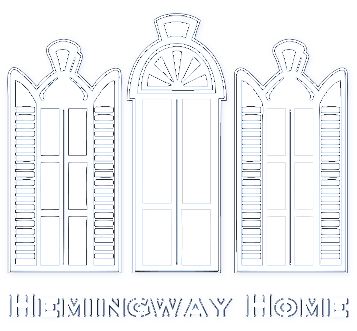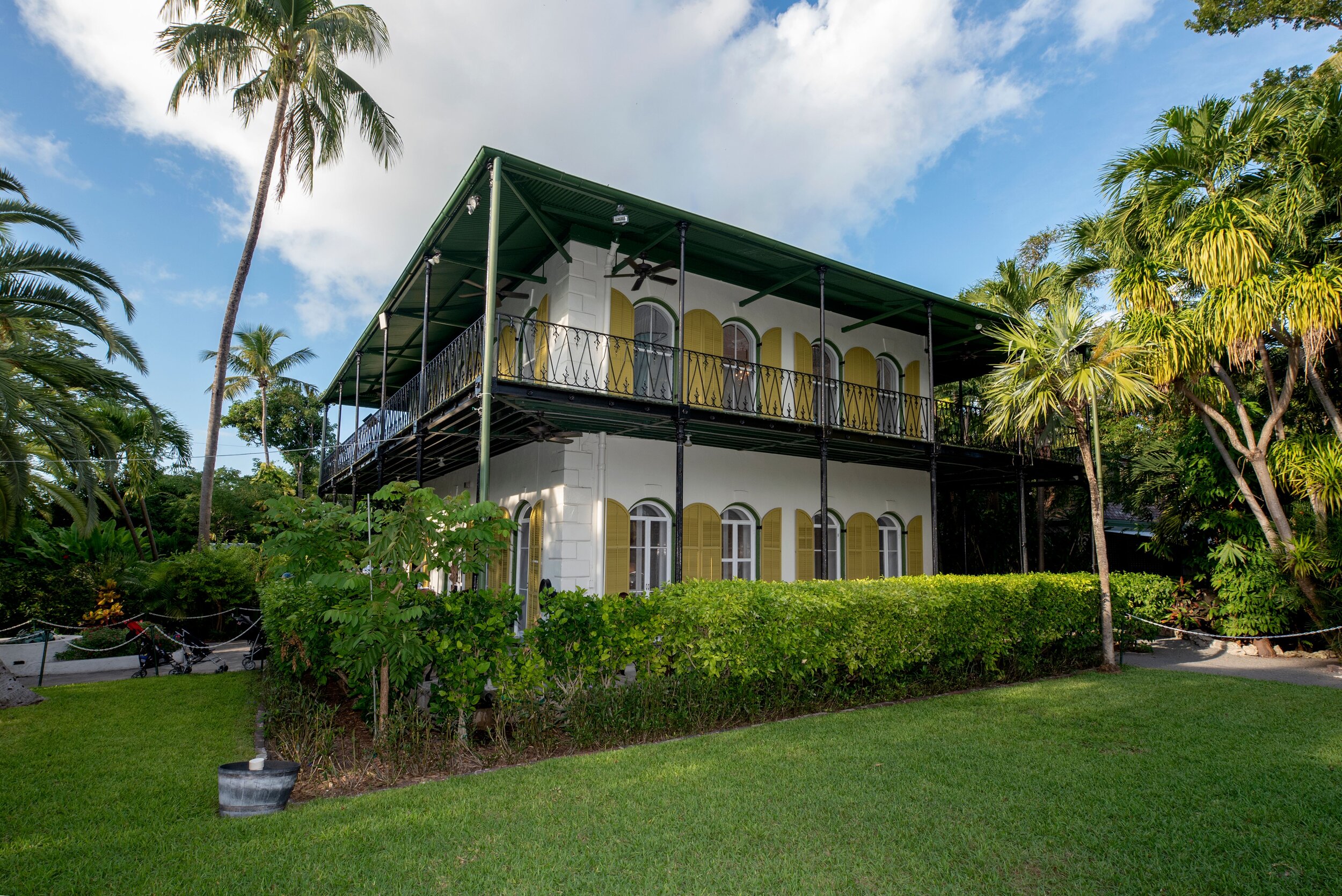Hemingway Home (Pool View)
Our Pool & Garden
One of the more stunning and unusual features of the Hemingway Home property is the in-ground swimming pool, an extraordinary luxury for a residential home in 1930s Key West. The final cost of construction in 1938 dollars was $20,000. Even more mind-boggling is the sheer labor of digging, in solid coral, a massive hole 24 feet wide, 60 feet long, 10 feet deep at the south end, and 5 feet deep at the north end. The Hemingway pool—the only one within 100 miles in the 1930s—was truly an architectural feat.
Few people know that, despite his protestations concerning the expense, it was Ernest Hemingway himself who planned the pool. His travels as a war correspondent during the Spanish Civil War, however, left oversight of the project to Pauline, and it was she who supervised the pool’s construction during 1937-1938.
And Ernest did complain mightily about the growing expenses of construction costs. Indeed, tourists who visit the property today are treated to humorous story of Hemingway, purportedly exasperated at the expense of the venture, flinging down a penny on the half-built flagstone pool patio and bellowing, “Pauline, you’ve spent all but my last penny, so you might as well have that!” Whether the story is apocryphal or not, there is a penny embedded in cement at the north end of the pool to memorialize Ernest’s purported outburst.
The site where the pool is located was formerly the setting of Hemingway’s famous boxing ring, where he would spar with local amateur boxers such as Shine Forbes. Construction of the pool necessitated relocation of the boxing ring to the site now occupied by the Blue Heaven Restaurant on Petronia Street, a few blocks away.
The pool has a mammoth 80,784 gallon capacity, and at the time of installation there was no fresh running water in Key West. Fresh rain water was collected through the gutters on the soffits of home roofs and drained into underground enclosed reservoirs called “cisterns,” but this provided only enough fresh water for home use—certainly not a sufficient supply water for such an immense pool. Accordingly, in 1938, pool construction involved drilling down to the salt-water table and installing a water pump to retrieve salt water to fill the pool.
Until the 1940s when Key West first had fresh water piped in and the pool was converted to a fresh water system, the pool was very high maintenance. Using the salt-water pump, it took two to three days to completely fill the pool. During the summer months, the salt water would remain fresh for only about two to three days. Then the pool would need to be completely drained, another day or two would be required to scrub down and remove the algae and debris, and then the cycle would start again.
There is no question this lovely swimming pool has a magical, even mystical, quality about it. This is perhaps exemplified by the commentary of poet Elizabeth Bishop, a friend of Pauline’s, who wrote of the famous pool in one of her letters to Robert Lowell:
“ . . .The swimming pool is wonderful -it is very large and the water, from away under the reef, is fairly salt. Also it lights up at night -I find that each underwater bulb is five times the voltage of the one bulb in the light house across the street, so the pool must be visible to Mars -it is wonderful to swim around in a sort of green fire, one’s friends look like luminous frogs . . .”
Take some time, on your visit to the Hemingway Home, to stroll around this lovely pool, enjoy the scent of gardenias blooming at the water’s edge, and imagine yourself in the company of Ernest, Pauline and their guests, swimming in the fresh salt water on a summer evening, looking like “luminous frogs.”
















